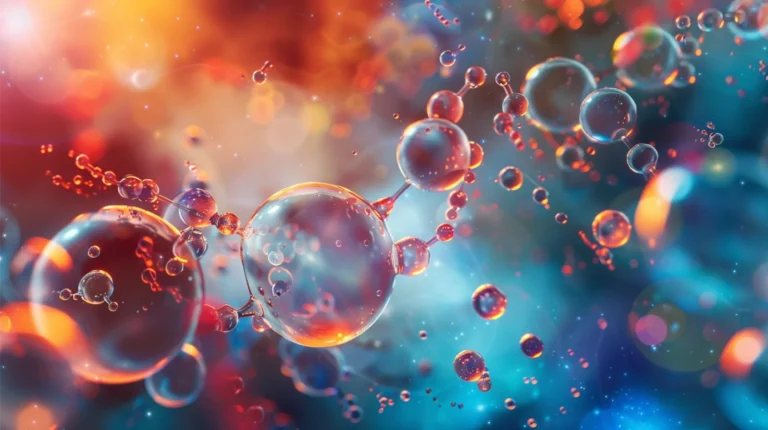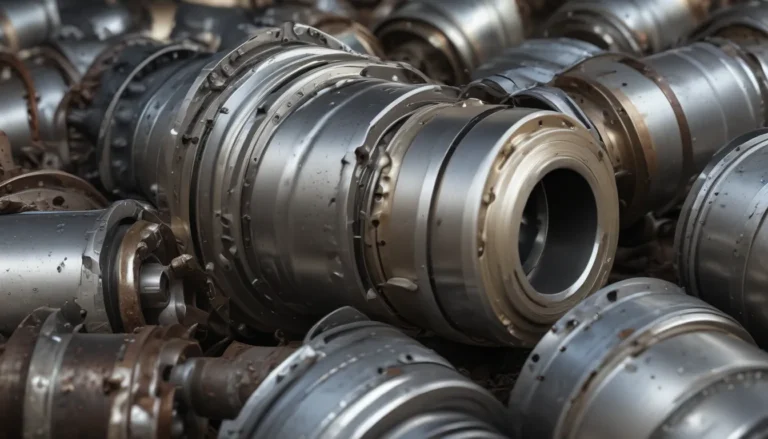A Note About Images: The images used in our articles are for illustration purposes only and may not exactly match the content. They are meant to engage readers, but the text should be relied upon for accurate information.
Microstructure is a captivating field that delves into the intricate world of small-scale structures and their properties, playing a crucial role in various scientific disciplines such as chemistry, materials science, and engineering. Understanding microstructure is essential for developing advanced materials, analyzing substance behavior, and optimizing manufacturing processes. In this article, we will explore 18 captivating facts about microstructure that will deepen your understanding of this intriguing subject. From the importance of crystallography to the role of microscopes in studying microstructure, we will dive into the depths to uncover the hidden secrets of these tiny structures. So, get ready to embark on a journey through the fascinating world of microstructure and discover the wonders it holds!
Key Takeaways:
- Microstructure determines the strength and properties of materials, influencing everything from metal durability to electronic device performance. By understanding and controlling microstructure, scientists and engineers can create new materials with specific characteristics, leading to exciting innovations in fields like medicine, electronics, and manufacturing.
Microstructure is the Key to Understanding Materials
Microstructure refers to the arrangement and organization of atoms and molecules on a microscopic scale within a material, crucial for determining the properties and behavior of various substances, from metals to polymers to ceramics.
The Influence of Microstructure on Material Properties
The size, shape, and distribution of grains, phases, and defects within a material’s microstructure can significantly impact its mechanical properties, enhancing strength, hardness, and resistance to corrosion and wear.
Unveiling Microstructure Through Microscopy
Various microscopy techniques, such as optical microscopy, electron microscopy, and atomic force microscopy, are used by scientists to examine and analyze the microstructure of materials, providing valuable insights into organization and composition.
Exploring Crystallographic Defects
Crystallographic defects, like point defects, line defects (dislocations), and planar defects, are common features within a material’s microstructure, significantly influencing mechanical, electrical, and thermal properties.
Understanding Grain Size’s Impact
The size of individual grains within a material’s microstructure can affect its mechanical, electrical, and optical properties, with finer grains enhancing strength and larger grains providing improved toughness and resistance to fracture.
The Role of Phase Transformations
Heating, cooling, and external factors can induce phase transformations within materials, leading to changes in microstructure, affecting characteristics like hardness, conductivity, and magnetic properties.
Microstructure in Material Processing
The microstructure of a material influences the processing techniques used for manufacturing and shaping it, enabling the production of materials with tailored properties through an understanding of the relationship between microstructure and processing.
Importance of Microstructure in Materials Characterization
Analyzing the microstructure of materials aids scientists and engineers in gaining insights into composition, properties, and performance, crucial for quality control, failure analysis, and developing new materials.
Alloys and Microstructure
In alloys, the microstructure determines the arrangement and distribution of different elements, creating unique properties, allowing alloy designers to develop materials with specific characteristics suited for particular applications.
Microstructure’s Impact on Electronic Devices
The microstructure of semiconductors contributes to determining electrical conductivity, bandgap, and overall efficiency, emphasizing the importance of optimizing microstructure for enhancing electronic device performance.
Response to Stress and Microstructure
The microstructure of a material influences its response to external forces or stress, impacting factors like deformation behavior, elasticity, and fracture resistance through considerations of grain boundaries, dislocations, and phase distribution.
Microstructure Analysis in Material Failure Investigation
Analyzing a material’s microstructure when it fails provides valuable information about the cause and mechanisms of failure, enabling engineers to improve design and performance for increased reliability.
Heat Treatment and Microstructure Modification
Specific heat treatment processes can result in changes in a material’s microstructure, with techniques like quenching, annealing, and tempering altering properties to meet specific requirements.
Microstructure in Biological Materials
In biological materials such as bones and tissues, microstructure determines mechanical strength, flexibility, and overall functionality, essential for medical advancements and biomaterial development.
Influence of Microstructure on Material Color and Appearance
In materials like minerals and gemstones, microstructure influences the interaction of light, resulting in color variations and optical effects dictated by the arrangement of atoms and molecules.
Grain Boundaries in Polycrystalline Materials
In polycrystalline materials, grain boundaries significantly influence material properties, with grain boundary engineering employed to enhance strength, conductivity, and corrosion resistance.
Microstructure in Composites
In composite materials, the microstructure of individual components and their interface influences the overall performance, with optimized microstructure leading to improved mechanical properties such as strength, stiffness, and toughness.
Essential Microstructure Analysis in Additive Manufacturing
Understanding and controlling microstructure are crucial in additive manufacturing (3D printing) for ensuring integrity, quality, and functionality of printed parts, aiding in optimizing printing parameters and material selection.
As evidenced by the captivating facts about microstructure, this intricate study of material organization on a microscopic level holds immense importance in fields ranging from materials science to engineering, enabling the development of advanced materials with tailored properties and unlocking innovations across various industries.
Conclusion
In conclusion, the world of microstructure is a fascinating one, holding many hidden secrets and captivating facts that continue to intrigue researchers and enthusiasts alike. The intricate arrangement of atoms and molecules at the microscopic level governs the behavior and characteristics of materials, enabling advancements in technology and significant discoveries across fields such as engineering, chemistry, materials science, and medicine. Delving deeper into the intriguing world of microstructure allows scientists to unlock new possibilities and push the boundaries of innovation, showcasing the vast impact of the micro-world on our daily lives.
FAQs
Q: What is microstructure?
A: Microstructure refers to the arrangement of particles, atoms, or molecules within a material at a microscopic level.
Q: Why is microstructure important?
A: Microstructure plays a crucial role in determining the properties and behavior of materials, influencing their mechanical, electrical, and chemical characteristics.
Q: How is microstructure studied?
A: Microstructure can be analyzed using various techniques such as microscopy, electron microscopy, X-ray diffraction, and spectroscopy.
Q: What are the applications of understanding microstructure?
A: Understanding microstructure is essential for fields such as materials science, engineering, metallurgy, and nanotechnology, enabling advancements in technology, medicine, and energy production.
Q: Can microstructure change?
A: Yes, microstructure can change due to factors such as temperature, pressure, mechanical stress, and chemical reactions, leading to alterations in material properties.
The world of microstructure holds immense opportunities for exploration and discovery, with each fact unraveling a piece of the complex puzzle that shapes the materials around us. Embrace the wonders of microstructure and its impact on innovation and advancement, and marvel at the intricate details that govern the properties of substances in our daily lives.






